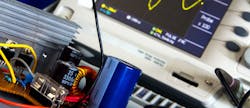DC-DC Converter Design Basics
This article series is in the Power Management topic within our Series Library and the Power Supply Design topic within our TechXchange Library.
What you’ll learn:
- The theory of buck, boost, and buck-boost converter operation.
- How to build buck, boost, and buck-boost converters using SLG47105.
- Discover real-life examples where these devices can be used.
DC-DC converters are widely used to efficiently produce a regulated voltage from a source that may or may not be well-controlled to a load that may or may not be constant. This series examines the basic differences between buck, boost, and buck-boost converters and shows how DC-DC converters can be built using the Renesas SLG47105.
DC-DC converters are high-frequency power-conversion circuits that use high-frequency switching and inductors, transformers, and capacitors to smooth out switching noise into regulated DC voltages. Closed feedback loops maintain constant voltage output even when changing input voltages and output currents.
At 90% efficiency, they're generally much more efficient and smaller than linear regulators. Their disadvantages are noise and complexity. DC-DC converters come in non-isolated and isolated varieties. Isolation is determined by whether or not the input ground is connected to the output ground.
This series addresses non-isolated converters only (buck, boost, and buck-boost), though the IC capabilities allow for designing the isolated ones as well.
Each part delves into a different type of converter:
